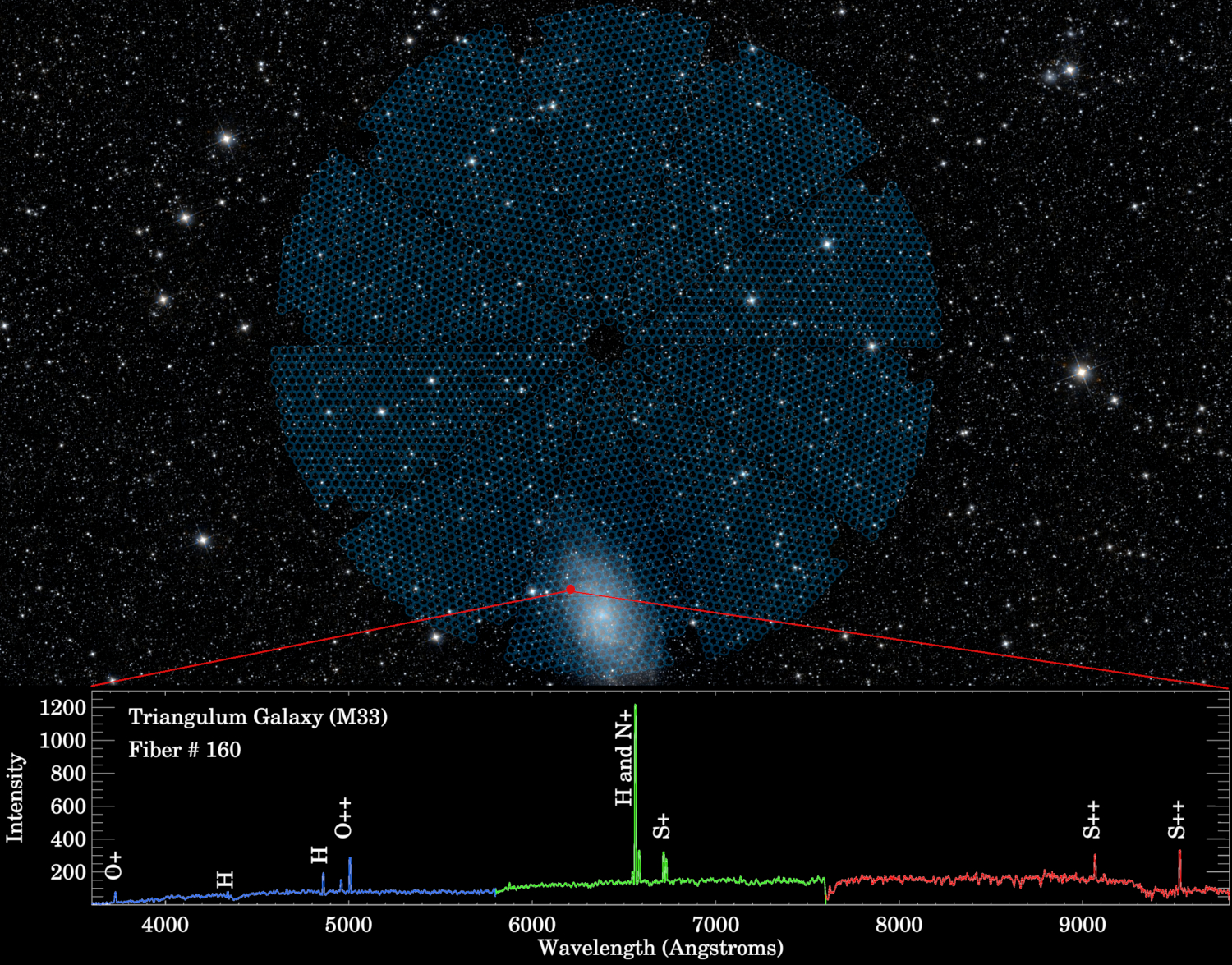Program Results
Dr. Andrew Cooper _ First Light for the Dark Energy Spectroscopic Instrument
Introduction to the event
The installation of the Dark Energy Spectroscopic Instrument (DESI) at the Mayall telescope in Arizona was finally completed in 2019, after more than a decade of planning and construction. In October 2019, DESI's 5000 'eyes' were opened to the sky for the first time. These 'eyes' are optical fibers, each of which measures the intensity of light from a star or galaxy at thousands of discrete wavelengths. In March 2020, Dr. Cooper was awarded 'builder' status by the multinational DESI collaboration in recognition of his contributions to the DESI Milky Way Survey. This unprecedented 5-year project will explore the earliest history of our Galaxy by mapping the velocities and chemical composition of 10 million stars in its most distant regions. Dr. Cooper and his colleagues are now busy analyzing the first test observations with DESI in order to refine the strategy of the survey before it begins in July 2020.
Dr. Cooper has established a research group at NTHU IoA to study Galaxy Formation and Galactic Archaeology with DESI data and wide-field imaging surveys. Supported by Dr. Cooper's Yushan research fund, students in the group are using observations and computer simulations to investigate dwarf galaxies, the astrophysics of dark matter and the structure of Galactic star clusters. Their research will be greatly aided by the new Centre for Informatics and Computation in Astronomy (CICA) at IoA, based around high-performance computing (HPC) facilities supported by MoE and NTHU. Dr. Cooper contributed his experience with "COSMA", one of Europe's leading astronomy HPC facilities, to the design and installation of the CICA cluster. CICA will open up new directions of research for both theorists and observers, help students develop informatics-based research skills, and act a bridge between the institute and the nearby National Centre for High-performance Computing.

▲One of DESI's very first tests (carried out on October 22, 2019) was to obtain this spectrum of light from the galaxy M33, which shows strong lines created by emission from ionized Hydrogen, Neon, Sulphur and other elements in the interstellar gas. These lines can be used to measure the distances to galaxies and understand their evolution. In a single observation, DESI can obtain one of these spectra from each of 5000 fiber-optic 'eyes' covering an enormous area of sky, shown as blue circles overlaid on the M33 galaxy in the top image. In the DESI Milky Way Survey, Dr. Cooper and his colleagues will use the instrument to gather light from 10 million distant stars in our own Galaxy (Credit: DESI Collaboration; Legacy Surveys; NASA/JPL-Caltech/UCLA)